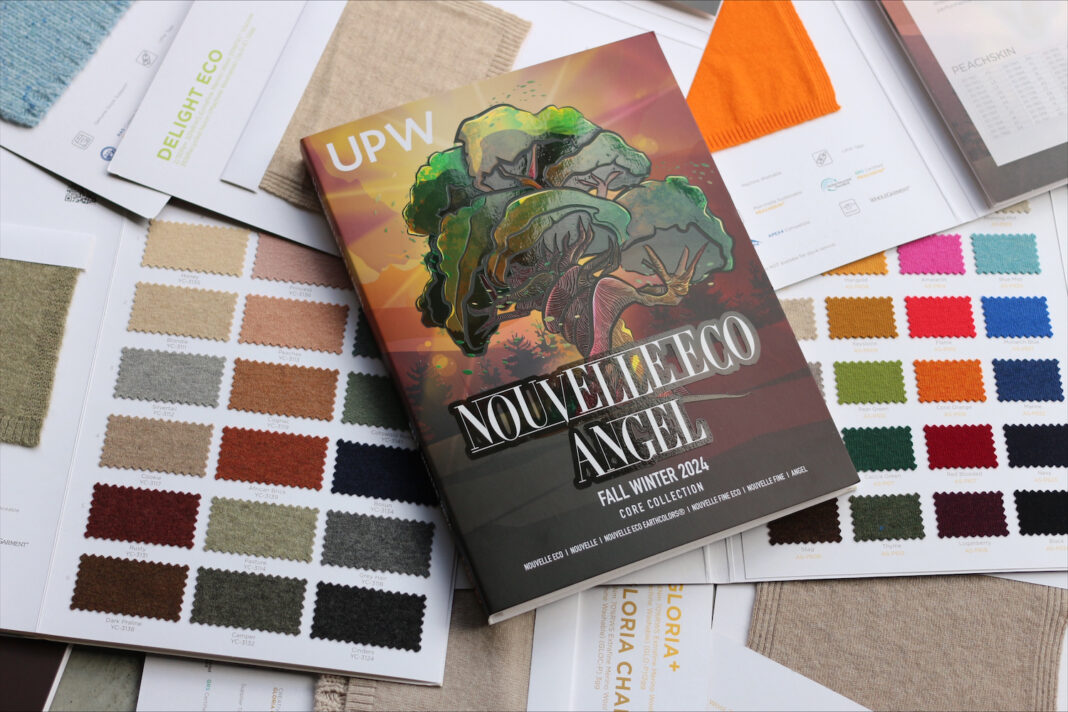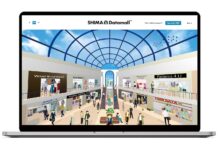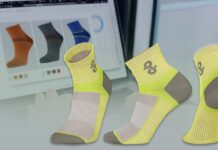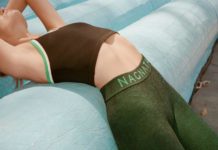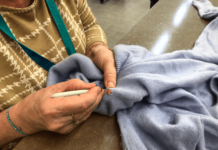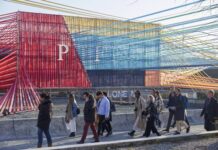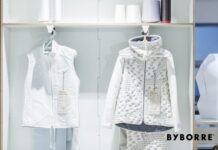Beth Ranson reports from UPW’s Florence, Italy event.
Alongside their impressive progress towards more sustainable practice and supply chain transparency, UPW presented their latest collection in Florence and shared news of industry collaborations including AI developments. For their FW24 collection, UPW’s inspiration lead by creative director Carlo Volpi was rooted in a belief in the importance of community.
Carlo Volpi has worked as Creative Director at UPW since 2018. With a wealth of experience in knitwear design working as a consultant for the Pitti Filati Research Area and as a tutor at the Royal College of Art, Carlo has a passion for innovation and handcrafted textiles. This in-depth knowledge of the potential of knitted textiles guides the direction of each UPW collection.
Working towards their goal of achieving net zero emissions in 2050, UPWs 10 core yarns have been verified and obtained the carbon footprint certification and label by TÜV SÜD. 6 core yarn products were certified as carbon neutral in March 2023. UPW aims to transform all their materials into traceable, certified raw materials. Across their collections GOTS and OCS certifications are held, as well as certifications for responsible animal fibre sourcing.
In further developments for their FW24 collection, UPW also shared their new hangtag developments. This features six official hangtags that provide sustainability information about their yarns within this E-label concept. The hangtags each have QR codes which link swatches and yarns with information about their properties, background and certifications. Cashmere, Wool, Yak, Organic Cotton and Carbon Foot-print certification are each covered by the tags, with consumers able to access this information by scanning the QR code, taking them directly to the landing page about the features of the yarn.
Their latest marketing program features BEST-Blockchain-Enabled Sustainable Traceability by UPW. BEST is an upgraded traceability solution powered by AntChain for delivering sustainable product journeys to consumers.
“Starting from the FW2024 collection, UPW collaborates with AntChain, the flagship technology brand of Ant Group, for supply chain traceability of yarn products, helping brands better convey sustainable product stories and establish a better brand value image, providing customers with a comprehensive and sustainable marketing promotion service,” UPW Online.

Providing this narrative to designers and consumers is an important step towards supply chain transparency which could help to connect consumers more closely with the garments and products they consume. Offering this information in such an accessible way should encourage deeper engagement with material choices too.
AW24
The concept of being interconnected through community and the potential of sharing experiences with the assistance of technology arguably presents now as the best time to be alive. But with the loss of authenticity and tactility this can cause, it is also a time where many feel isolated and unseen. This raised the question for Carlo and the UPW team, ‘how can we come back together through design?’
In search of a common connection between all of us, they came across the spiritual practices of Shamanism, one of the first known spiritual practices of mankind. The AW24/25 collection stems from this belief in the spirituality of all beings, and their interconnectivity.
Split into five stories, a spirit animal represents each capsule trend collection, presenting moods, colours and stitches inspired by their characteristics.
As always, UPW presented not only a collection of yarns, but a series of tangible applications and inspiration for designers. Producing their swatches using Shima Seiki Apex Software makes their programmes accessible and amendable by designers. Their yarns can also be accessed within the Apex Yarn Bank too, allowing designers to interact with their new shade card offerings within their own design contexts.
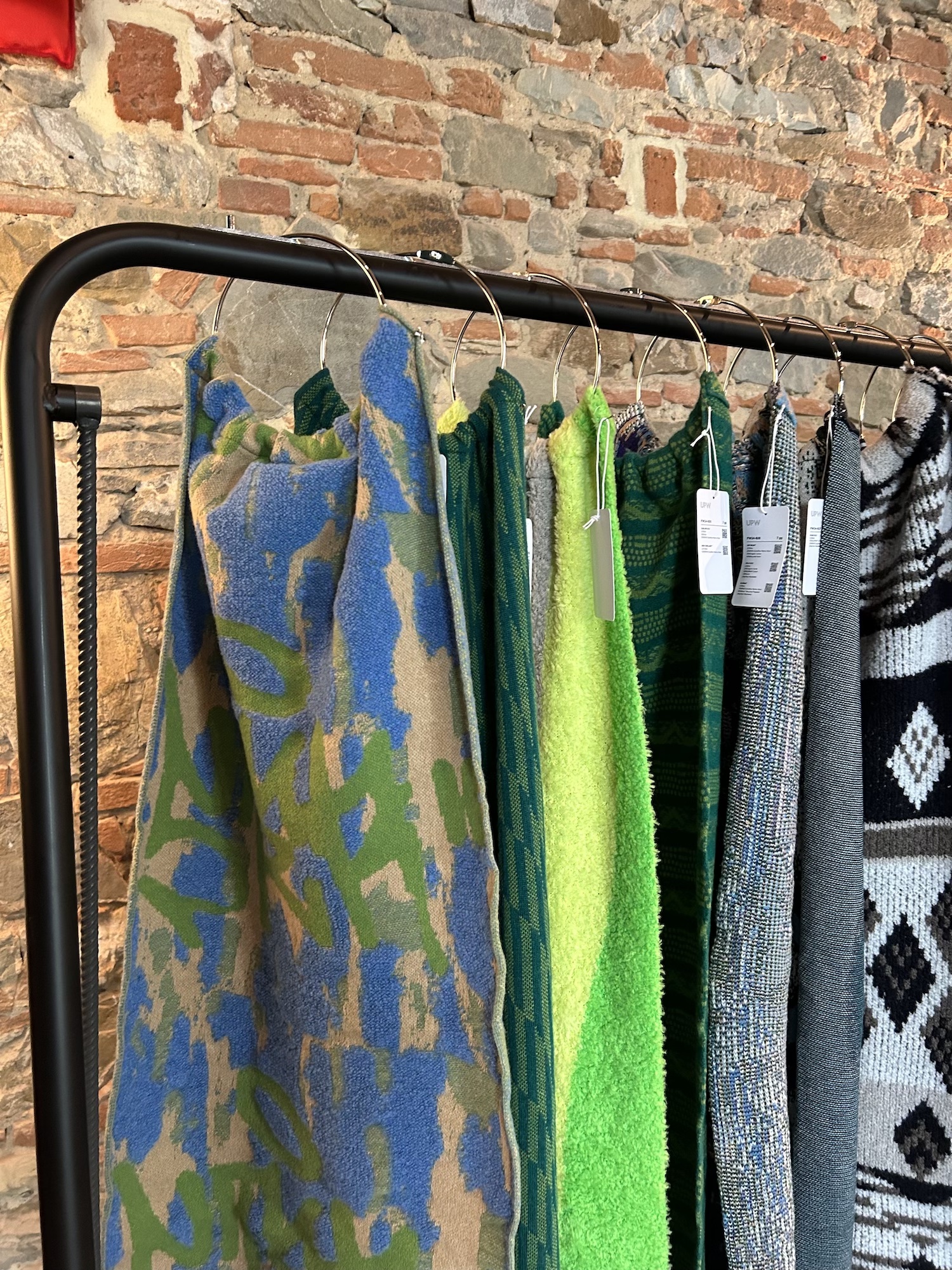
The Owl
Romantic and enchanted, the Owl collection echoes sentiments of fairy tales, magic and mystery. There is a soft, relaxed energy to this story. The colour story of pastels is quite unexpected for an AW collection and this balanced colour harmony combined with the decorative stitches and motifs in the fabric collection is deeply rooted in nature. Illustrative jacquards of animals, blurred and brushed stripes, tactile textiles and 2D decorative motifs define this story, echoing the wise yet light-hearted qualities of the spirit animal which inspired it.
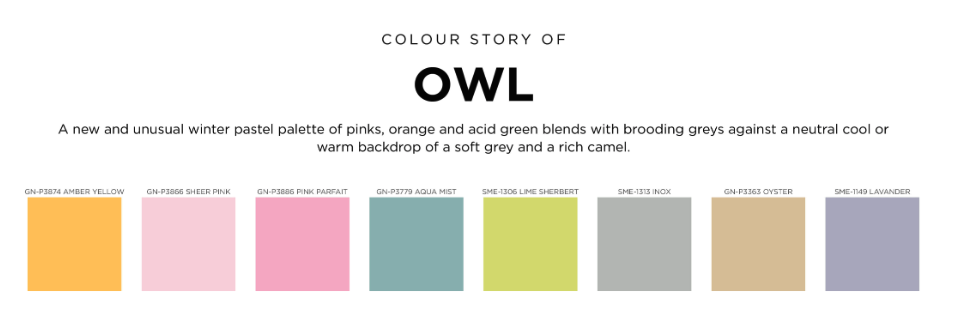
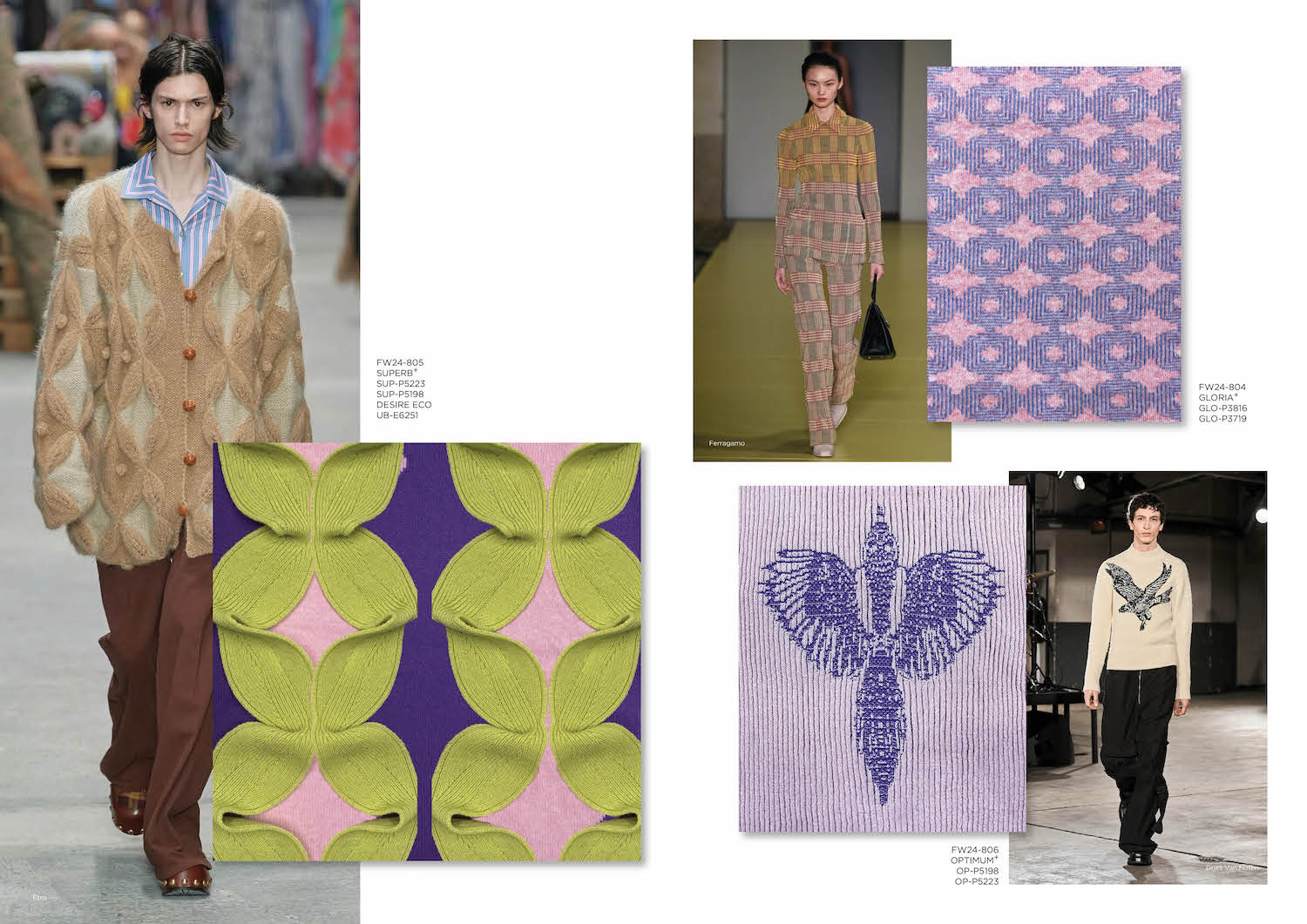
The Jaguar
The transition to the Jaguar collection is noted immediately by the colourful and energetic vibrant colour palette. Individuality, confidence, courage and determination are the qualities this spirit animal holds. These are translated through the family of reds in the colour palette, from blood red to peach and orange. Darker greys and plums compliment and add depth. The stitches within this story combine traditional woven textiles and checks with bold proportions of colour, hand-made tapestry techniques and a celebration of the qualities of woven textiles.

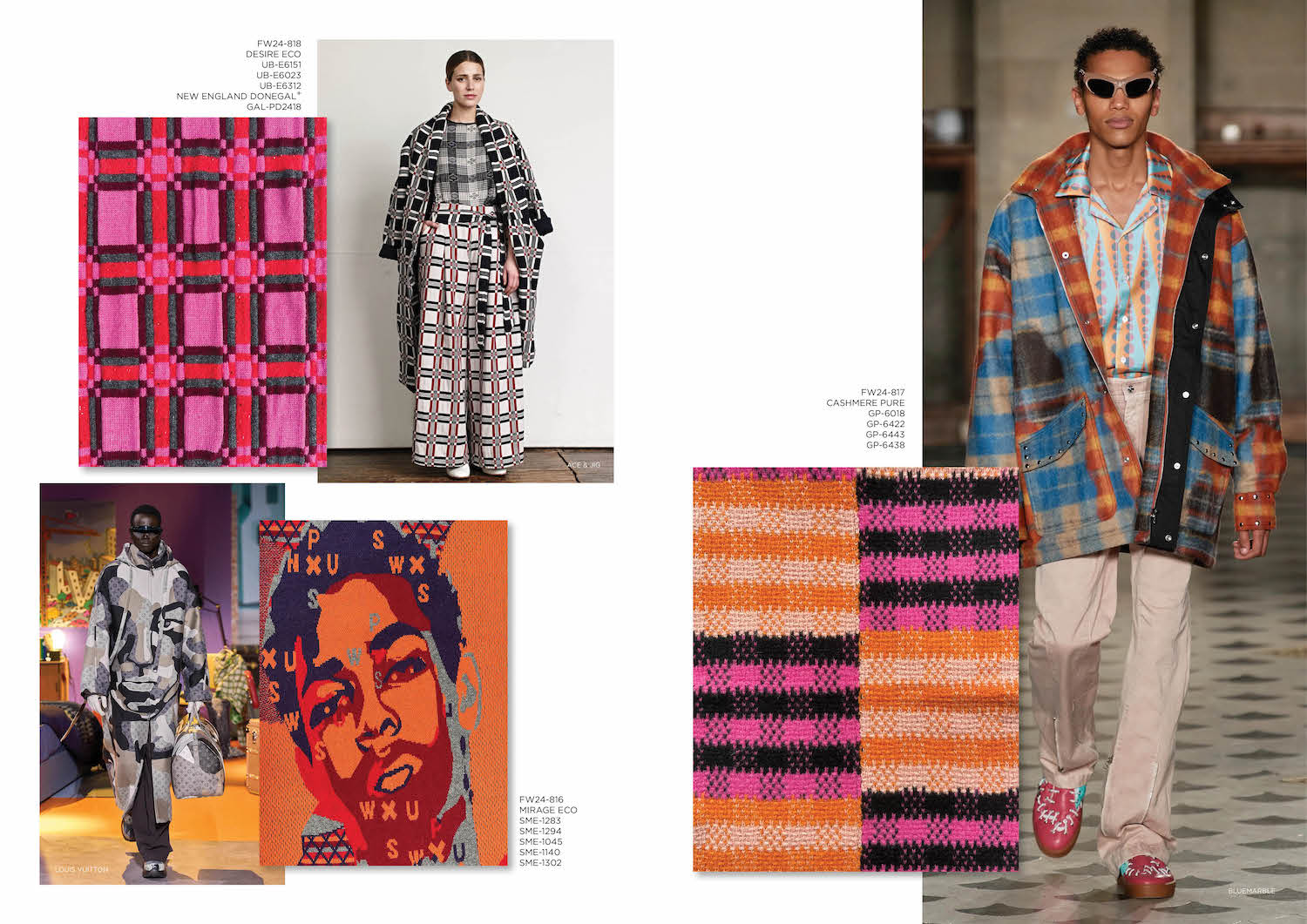
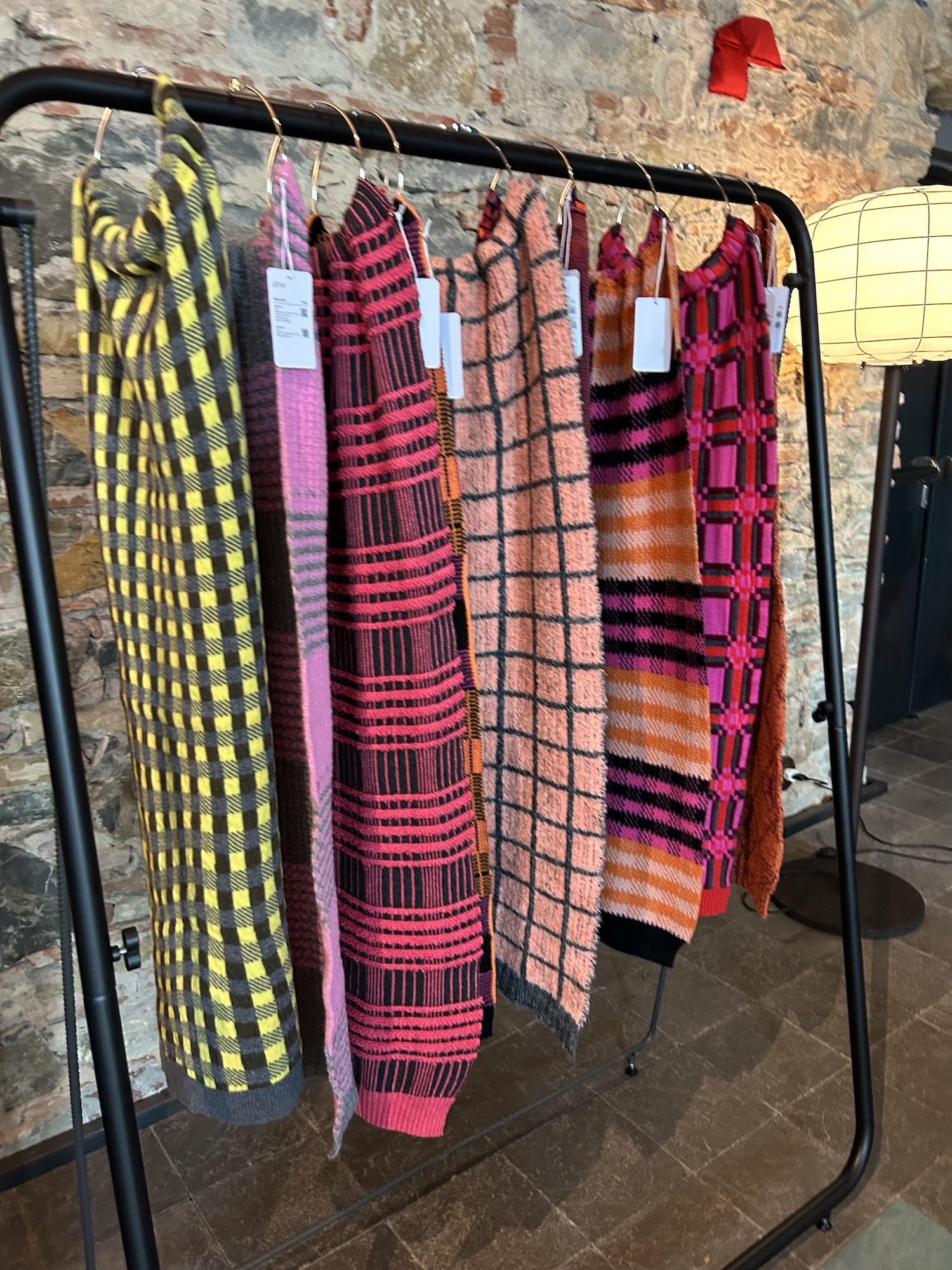
The Hummingbird
Lightness, agility, and adaptability are the strengths of this animal, inspiring a colour palette of harmonious colour gradients of blues and greens. Cooler tones are prominent here, incorporated into knitted structures with optical patterns, partial knitting and the application of varied dyeing processes. Surface patterns and textures clash with and complement one another, with graphic yet abstract figurative illustrations.


The Wolf
Rooted in inspiration from nature, this colour and fabric story is warm, cosy and wintery. The darker palette emulates darker, magical qualities, reminiscent of a sense of freedom whilst celebrating the protective nature of this animal. The mood board for this palette stems from imagery of ancient materials with a strong hand-made presence. A family of browns ranging from tan and wood tones to pastel yellows and pebble grey contrasts with the previous stories. Stitches explore upcycling and patching, mending and distressing. Hand techniques and post-machine processes are celebrated, with hand tacking and sewing showcased in the fabrics. Argyles are combined in interesting ways with tapestry techniques and ladders. There is a captivating dynamic between the refined and the ‘undone’.


The Eagle
The eagle is a predator with sharp vision and clarity, inspiring sharp lines and precision within a colour palette of transitional monochromes. Arguably the most adaptable palette of all, this offering contains black, navy, pale green and neutral tones. Stitches include monochrome stripes and simple yet refined textures, echoing the clarity of the eagle. Traditional yet timeless stitches such as moss and garter stitch are celebrated in highly refined looks, contrasting with more graphic jacquards.
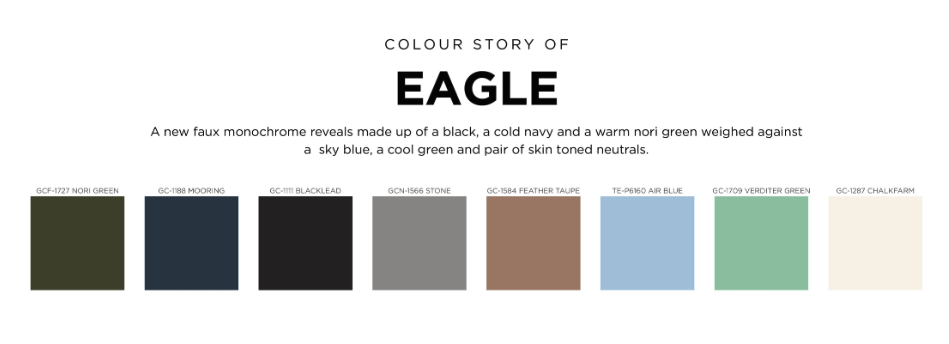
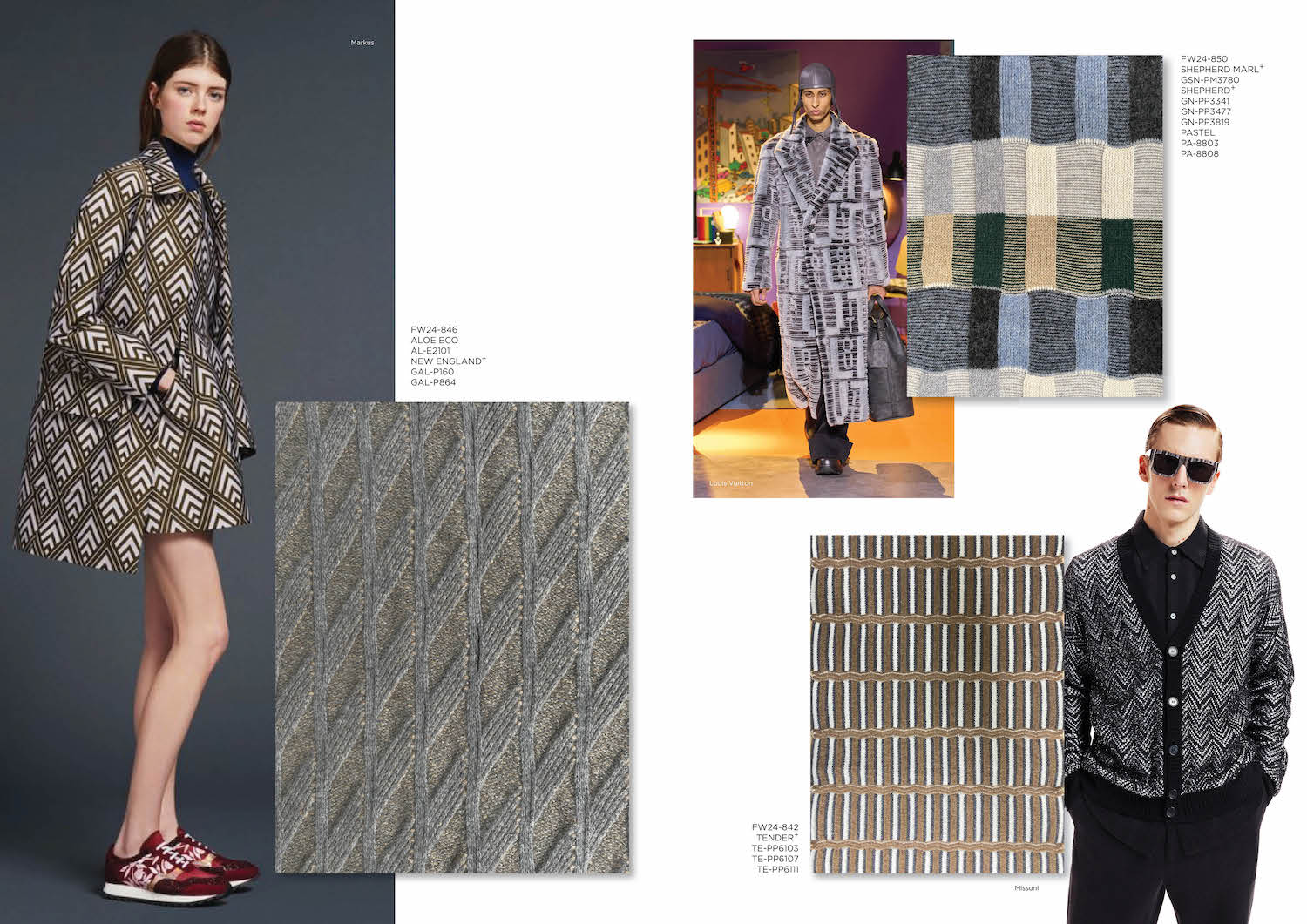
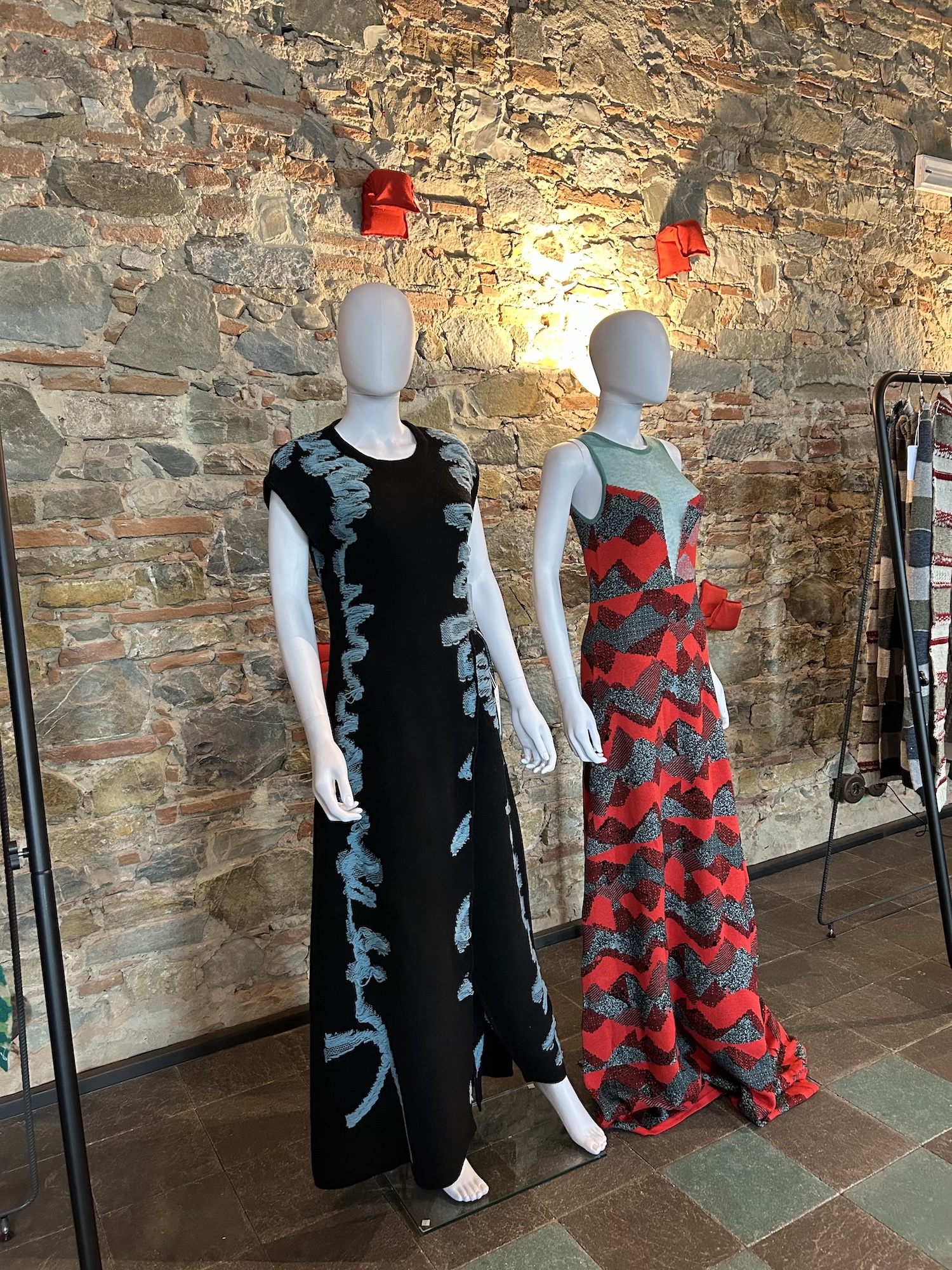
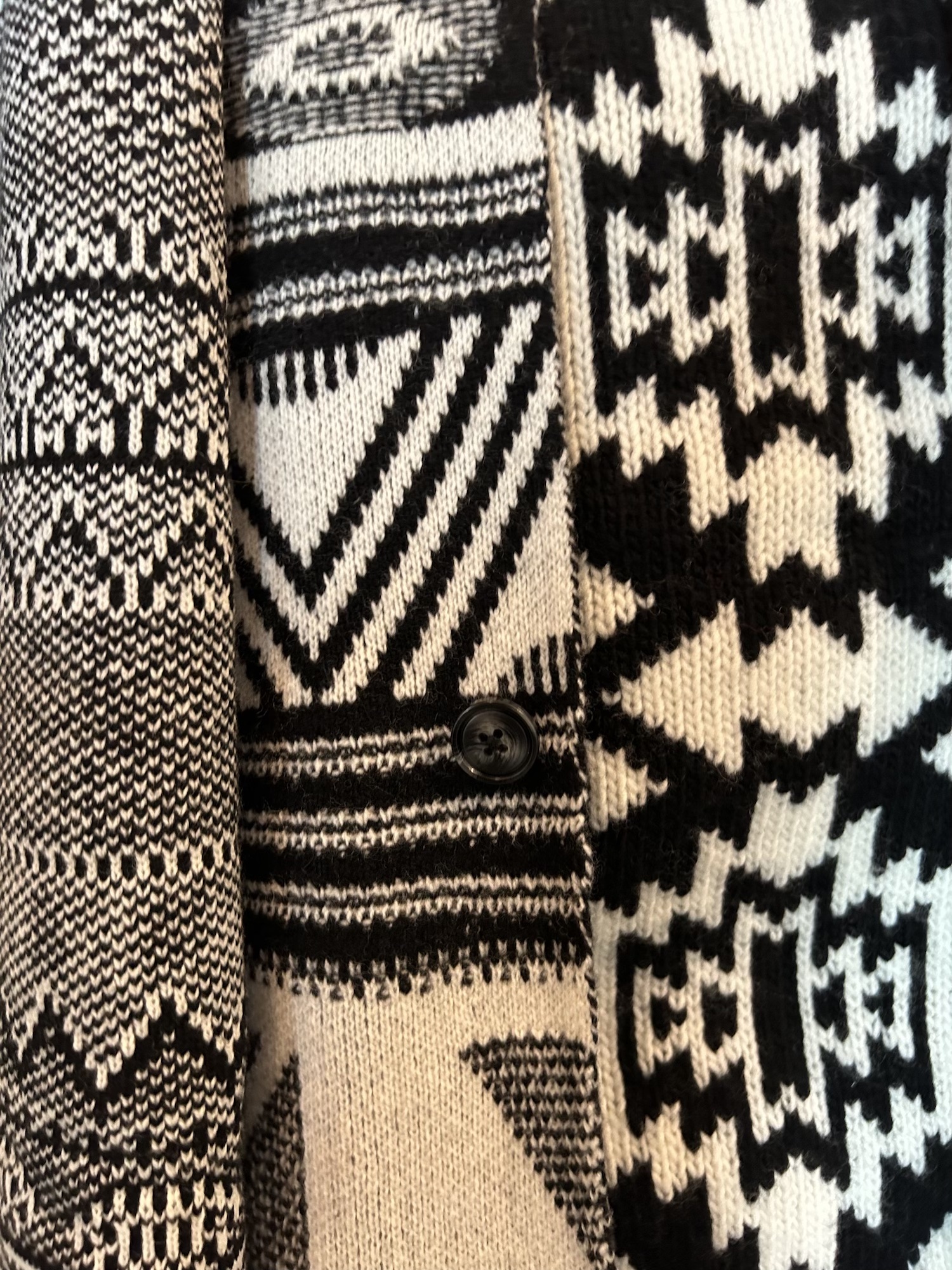
Across these stories within the UPW FW24 collection, the adaptability across design applications is showcased. Technical stitches can be achieved alongside crafted pieces and mixed media textiles can be embraced when working with their yarns.
UPW in collaboration with AiDLab and AiDA
UPW collaborated specifically with AiDLab for their Florence event. Professor Calvin Wong, the CEO and Centre Director of AiDLab (Laboratory for Artificial Intelligence in Design), served as the guest speaker on 28th June in the event. He shared valuable insights into the future of AI and fashion design, presenting the details of his team’s beliefs and advancements in the field.
AiDA is an AI based interactive fashion design platform which empowers designers to create an original design based on their own creative inspiration with just a few clicks. It works by allowing designers to first upload their mood board images, sketches and define colour palette, then a collection of 8 outfits will be generated in around 10 seconds, offering fast inspiration to designers. Professor Wong stressed that the user-friendly interface meant designers could engage with AiDA and produce outcomes within hours, with no need to attend lengthy training courses. Professor Wong explained that the aim of the platform is to intervene at the early stages of design development and offer designers quicker, more varied inspiration based on their own creative ideas and design briefs.
At present, the platform does not integrate with other software because, Professor Wong explained, the system completes the process it is intended for within itself. The colour, placement and proportions of patterns, prints and solid colours can be captured with accuracy and edited by users within the platform too. As the essence of the platform targets to facilitate designer’s inspiration, the current generation of AiDA does not handle recognising or controlling woven or knitted fabric stitches. In this way, the effect of the edited proportions of patterns and prints on the fabric stitches is not reflected on the sketches that are produced. A human ‘touch’ is therefore still relied upon, with the aim being that AiDA can work with fashion practitioners to assist them.
UPW X Angel Chen X AiDLab

Independent fashion designer Angel Chen collaborated with UPW and AiDLab in creating her AW23 collection. Angel’s mood board and garment sketches were uploaded to AiDA and hundreds of designs were then generated. Angel was inspired by the AI designs and produced the knitted garment looks, featuring multicolour stripes, fringing and knitted accessories. Angel Chen’s AW23 collection showcases new shades echoing colours from the land and nature, while blending precious materials like yak down, cashmere, camel hair, and Merino wool to create a soft texture.

Acknowledging there are still ways in which the technology could become even more refined, Angel shared her excitement for the potential this design platform holds and expressed gratitude to both AiDLab and UPW for the opportunity to be one of the first to integrate these yarns and systems into her practice.


UPW X AiDLab: Intelligent Scarf
Alongside their FW24 collection, UPW also announced their collaboration with AiDLab on their luxury intelligent scarf. Professor Jeanne Tan and their team at AiDLab designed an illuminative scarf in collaboration with UPW, utilising the FW24 yarn collection. The scarf is a smart accessory, knitted in a jacquard structure using UPW’s Cashmere Pure, alongside photonic fibre and transparent yarn. The colour and lighting of the intelligent scarf can be controlled by the app developed by AiDLab.

Though the illuminative scarf is knitted with photonic fibre, the fabric is surprisingly soft with a comfortable drape. The battery pack which lasts 6-8 hours is hidden within one of the knitted trims. With the battery pack removed, the scarf is also machine washable.
The illuminative scarf is an exciting development, demonstrating the success of interdisciplinary research among specialist design knitting and AI innovation.
The quality of UPWs yarns is essential to the success of this scarf, creating the drape and handle that makes this such a wearable product.
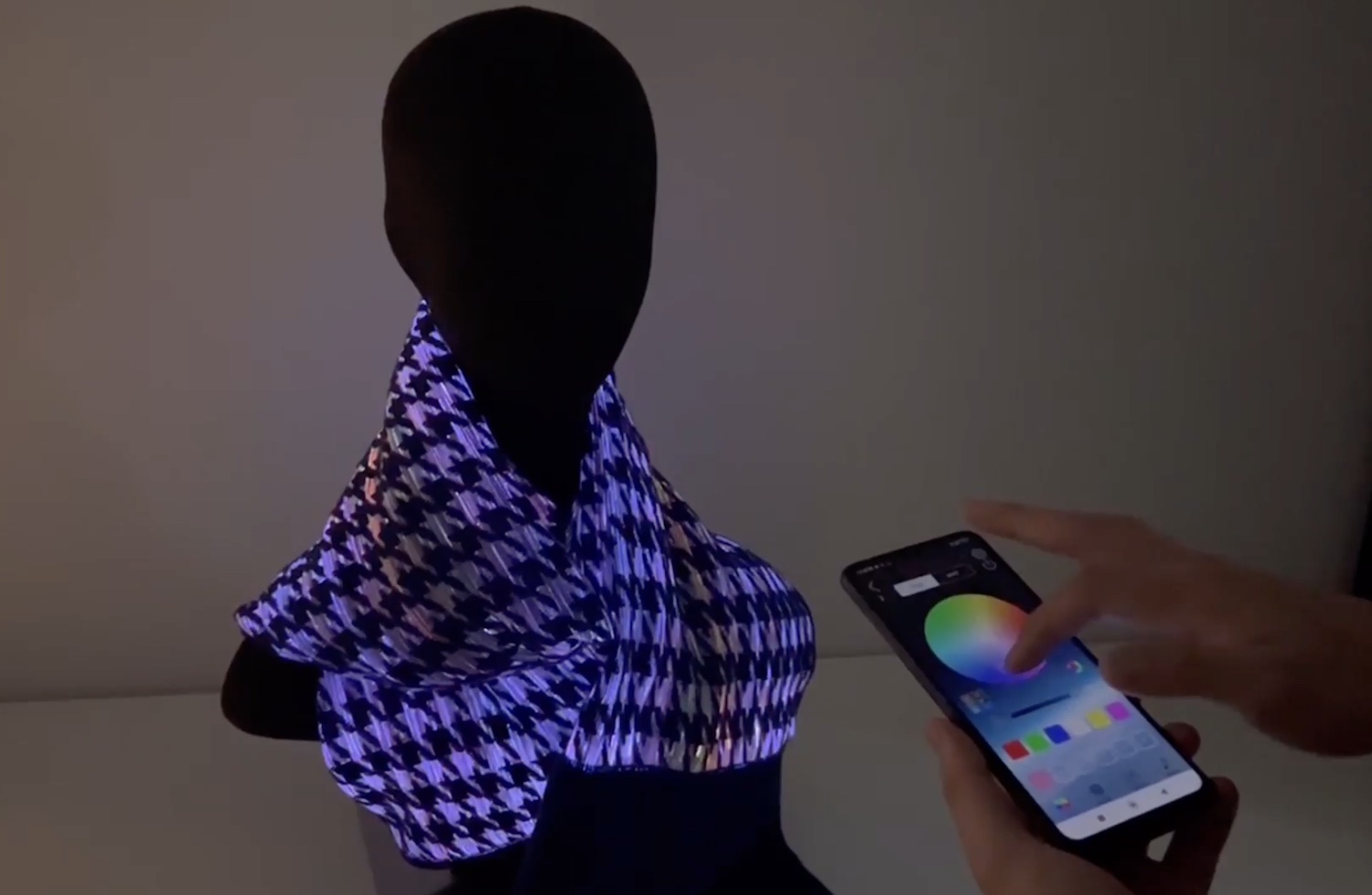

UPW continues to present trend stories, colour families and yarn collections that are inspiring for the knitting industry. Their latest interactions with AI will hopefully be just the beginning of their journey in demonstrating to the knitting industry how AI can work alongside the specialist knowledge of knitters and spinners to generate ever more unique future collections.
The preservation of tactility, texture, stitch and colour whilst embracing new technologies is an ongoing investigation, one we hope to see more risk taking and experimentation on in UPWs future seasons too.

Subscribe To Our Newsletter
Join our mailing list to receive the latest news and updates from our team.


